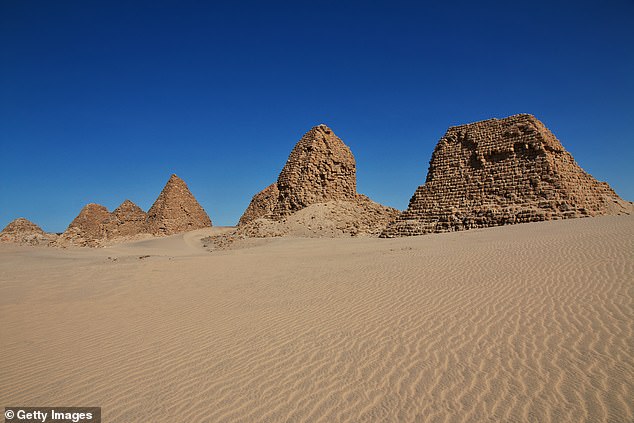
Ancient Skeletons Unearthed in Egyptian Pyramids May Rewrite Iconic Structures’ History
Ancient Pyramid Burials Challenge Egyptian Elite Narrative
Scientists have uncovered skeletons in Egyptian-style pyramids at Tombos, Sudan, revealing that these monumental tombs weren’t exclusive to elites. The remains, dating to Egypt’s conquest of Nubia (circa 1500 BC), show signs of physically demanding labor, suggesting non-elite individuals were buried alongside nobility. This discovery challenges long-held assumptions about pyramid burials and offers new insights into ancient social structures.

Ancient pyramids of Nuri in Sudan, near the Tombos site. (Image: Daily Mail)
Tombos: A Colonial Hub
Located near the Nile in modern Sudan, Tombos became a key Egyptian colonial outpost after the conquest of Nubia. The site includes mud-brick pyramids and burial chambers, initially thought to house high-status figures like officials, scribes, and craftsmen. However, recent findings reveal a more diverse population.
Archaeologists from Leiden University and Purdue University analyzed skeletal remains, focusing on bone markings where muscles and tendons once attached. They identified two distinct groups: those with minimal physical activity (likely elites) and others with signs of strenuous labor. The latter, termed “low-status” individuals, were buried in pyramids despite their modest backgrounds—a practice previously undocumented.
Rethinking Burial Practices
The largest pyramid at Tombos belonged to Siamun, a 21st Dynasty pharaoh (1077–943 BC), featuring ornate chapels and clay funerary cones. Yet, nearby tombs contained laborers who may have served elites in life—and perhaps in the afterlife. Researchers rule out human sacrifice, as evidence from this period suggests voluntary burial practices.

Pottery and human remains found at Tombos. (Image: Daily Mail)
Lead researcher Sarah Schrader notes, “These findings transform our understanding of pyramid tombs. Even ‘monumental’ structures may have included laborers, indicating a complex social landscape.” Published in the Journal of Anthropological Archaeology, the study highlights how burial customs blended Egyptian and Nubian traditions, reflecting shifting cultural identities.
Sudan’s Pyramid Legacy
While Egypt’s pyramids are famed, Sudan boasts around 80 smaller, steep-sided pyramids at sites like Nuri and Meroë. The Tombos pyramids, though less grand, symbolize the fusion of Egyptian and local practices. Meanwhile, Egypt’s pyramids—such as the Step Pyramid of Djoser (2667–2648 BC) and the Giza complex—remain iconic.

Djoser’s Step Pyramid, Egypt’s oldest. (Image: Daily Mail)
A New Chapter in Egyptology
This discovery underscores the dynamic social hierarchies of ancient societies. As Schrader concludes, “Biomolecular analysis and ongoing excavations continue to reshape our understanding of the past.” Far from static monuments, pyramids served as bridges between life, death, and societal roles—honoring both the powerful and the laborers who sustained them.
(Word count: ~600)


